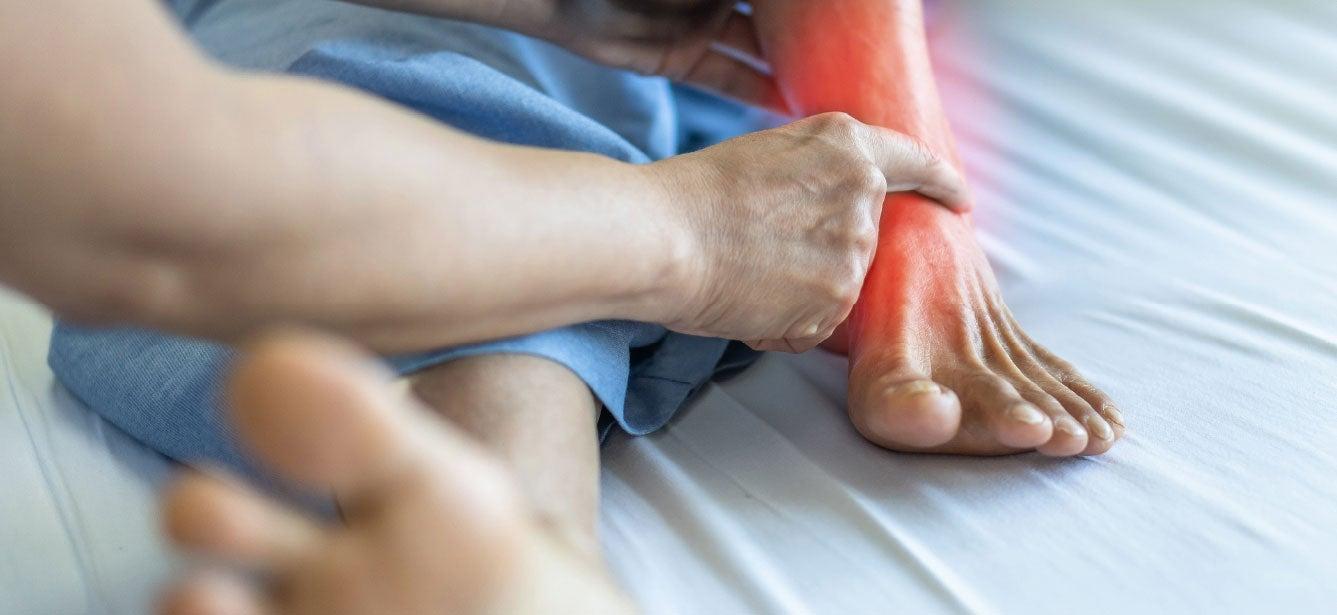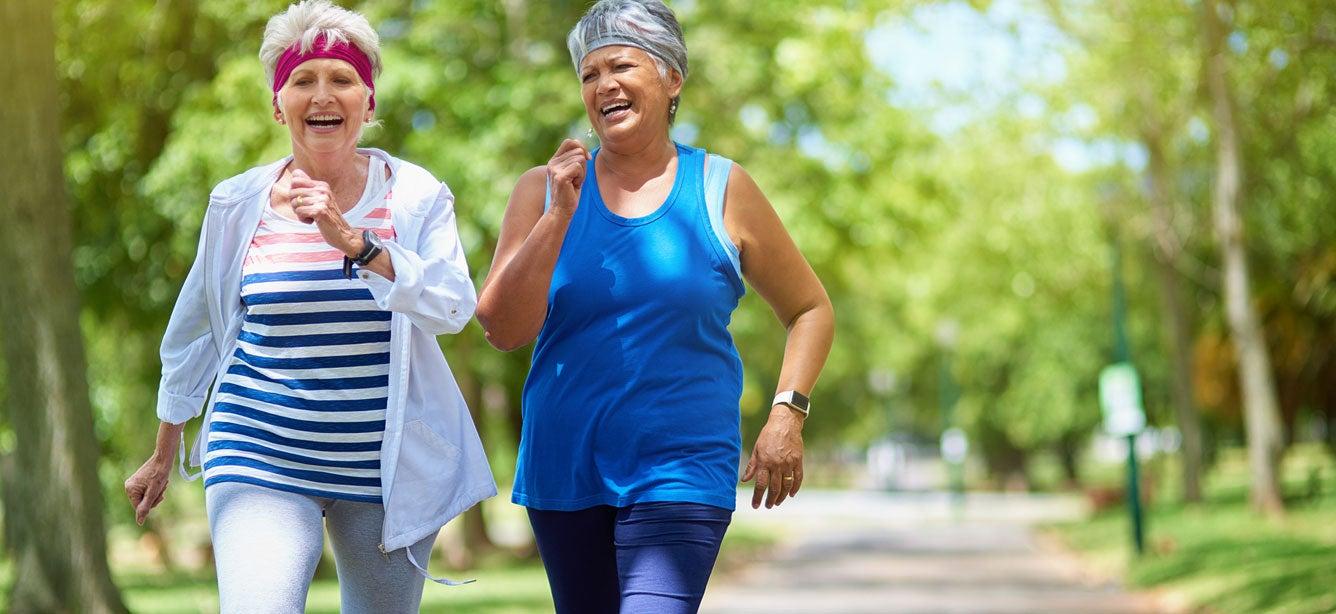
Related Topics
Are you experiencing stiffness, swelling and pain in your joints? It could be caused by osteoarthritis, or OA, the most common type of arthritis. You don’t have to just live with joint pain. Even though there is no cure for OA, there are many options to manage OA.
Talk to your health care provider about your treatment options sooner rather than later. For most people, osteoarthritis could get worse over time if symptoms are not addressed early. People respond differently to treatments, so you may need to try several methods (or a combination of methods) before you find what works best for you. Also, it is possible that what works for you today may not work as well in the future, so be open to trying new treatments as your symptoms change.
The latest osteoarthritis management guidelines from the American College of Rheumatology and Arthritis Foundation1 recommend using two broad categories of treatment options at the same time: non-medication and treatments.
7 non-medication treatments to help manage osteoarthritis
1. Physical activity. There is a common myth that being active could make arthritis worse, but the opposite is true! Physical activity helps increase strength, range of motion, joint stability, and function and can make OA symptoms better. Physical activity can also help you manage your weight and other health conditions like heart disease and diabetes. Aim for a combination of aerobic, strengthening, and balance/flexibility exercises. Some joint-friendly activities include: walking, swimming or water aerobics, cycling, tai chi, yoga, resistance bands, light gardening, and even household chores. There are many physical activity-focused arthritis management programs available in the community or online; some examples include: Walk With Ease (Group or Self-Directed), Fit & Strong!, and Active Living Every Day. You can also check with your employer or health insurance plan to see if you might be eligible for fitness center discounts and free or reduced-price exercise classes. Finally, the most important thing to remember is to move more: try and find ways to be more active throughout the day.
2. Weight management. Extra weight increases joint pain and damages cartilage of the joints, especially in the hips and knees. Even small amounts of weight loss may help relieve pain. Every 1 pound of weight loss gives you 4 pounds of relief on your knees.2 We know that losing weight is not easy, and there is not one “best way” to lose weight. Managing your weight through a healthy diet and increased physical activity can help you reduce your joint pain. Like managing OA, finding a healthy weight involves a combination of approaches and sometimes a little trial and error. In addition to physical activity and changes in eating habits, other weight loss strategies can include surgery and medications. Talk to your healthcare provider or a nutrition expert about what the best weight management approach is for you.
3. Education and social support. Managing OA may mean balancing a variety of symptoms, conditions, emotions, healthcare providers, and treatments. Educating yourself about your condition, learning skills that help you cope, and connecting with peers who have similar experiences can help you manage your pain. Look for self-management education classes like the Chronic Disease Self-Management Program or Better Choices, Better Health that can help you learn how to manage a chronic condition, prevent its short- and long-term health consequences, and achieve the best possible quality of life.
4. Physical and/or occupational therapy. Physical therapy can help improve your movement, strength, endurance, activity level, balance, and function. Occupational therapy focuses on improving your daily functioning and independence by setting you up with techniques to manage everyday tasks. Both physical and occupational therapists can also help fit you for braces, orthoses, assistive devices, and walking aids.
5.Assistive devices. Braces and canes may improve pain, joint stability, and balance and can help lower your risk of a fall.
6. Mind-body treatments. Pain and other symptoms from osteoarthritis can lead to feelings of stress, anxiety, frustration and depression; it is important to take care of both your physical health AND your mental health. Acupuncture, massage, and heat and cold treatments can help reduce pain. Tai chi and yoga can reduce pain, stiffness, and stress and improve feelings of relaxation and well-being. Group or one-on-one counseling can help you manage stress, anxiety, depression, and sleep.
7. Joint protection. Joint protection strategies can help reduce pain and risk of injury and make everyday tasks a little easier. Wear supportive shoes; alternate between sitting and standing; take short stretching breaks throughout the day; use safe lifting practices; try to spread your weight evenly across your joints when walking, climbing stairs, and doing heavy household chores; rethink your household chores to minimize joint strain; and invest in gadgets that make daily tasks easier.
5 medication treatments to relieve pain from osteoarthritis
All medications should be used in consultation with a health care provider.
Medications can help relieve pain and inflammation caused by arthritis, allowing you to have greater mobility, function, and quality of life.
1. Oral. Non-steroidal anti-inflammatory medications (NSAIDs) are the most common type of medication recommended for osteoarthritis pain relief. NSAIDs reduce swelling and inflammation around the joint. These should be used with caution because they can cause stomach bleeding and can contribute to the risk for cardiovascular or kidney conditions. Acetaminophen may help mild cases of OA or when other medications can’t be taken. Prescription-only medications like tramadol or duloxetine may be recommended for some cases of severe OA or with other medical conditions. These medications are for symptom management only, and should be taken at the lowest dose and for the shortest time possible.
2. Topical. Creams or gels that can be rubbed into the skin around joints may provide temporary pain relief. Examples include NSAIDs and capsaicin (chili pepper compound), both of which can be found over-the-counter or as a prescription.
3. Injections. For joint injections, a provider will use a needle, with or without ultrasound, to insert medication into the space around the joint. There are two main types of injections: corticosteroids and hyaluronic acid. Corticosteroid injections help reduce inflammation in the joint, while hyaluronic acid acts like a gel, providing cushion between the joints. Injections can only be given a few times a year and may not be recommended for people with certain health conditions such as diabetes.
4. Questionable treatments. There is little scientific evidence that the following alternative treatments to address osteoarthritis pain are effective or even safe: CBD products, glucosamine supplements, vitamins and minerals, turmeric, fish oil, and herbal treatments. Combining any medications (over-the-counter or prescription) carries risk. It is important that you discuss ALL prescribed AND non-prescribed medications or supplements with your healthcare provider.
5. Surgery. If all other types of treatments have been tried and you are still experiencing severe pain and disability from osteoarthritis, surgery may be a consideration. The most common types of surgery for OA are total joint and partial joint replacements. An orthopedic surgeon will examine your x-rays, conduct a full health history and exam, and ask about your experiences with OA to determine the most appropriate timing and type of surgery for you.
We asked people with osteoarthritis to tell us what they do to help manage their joint pain. Maybe some of these ideas will inspire you:
- Strive to stay physically active throughout the day, even if you have to try shorter “bursts” of activity.
- Losing weight is hard. When the going gets tough, remember that any weight loss amount can help relieve some of your pain by decreasing pressure on your joints.
- Chronic pain can make you feel isolated and lonely. Maintain a support network of family and friends to feel connected with those you love. Enrolling in an online support group such as HealthUnlocked or Facebook StandUp2OA support group is a great way to share what you are going through with others who understand.
- Keep a positive mindset. This might be easier said than done, but small moments of joy can have big impacts. Consider starting a daily gratitude journal or taking time to reflect on the things that have gone well recently.
- Recognize, understand, and accept that OA will affect how you move your body, which will impact your life. Assistance in the form of a cane, walker, braces, cushions, or a body pillow may be needed to help reduce the amount of pressure on your joints.
- Work with a trusted physical therapist/physiotherapist to learn safe exercises to keep your muscles strong and joints flexible.
For more resources on osteoarthritis, visit the OA Action Alliance website.
Sources
1. Arthritis Foundation. Treatment Guidelines for Osteoarthritis. Found on the internet at https://www.arthritis.org/diseases/more-about/guidelines-for-osteoarthritis-treatments
2. Arthritis Foundation. OA Diagnosis: Why Weight Loss Matters. Found on the internet at https://www.arthritis.org/health-wellness/healthy-living/nutrition/weight-loss/oa-diagnosis-why-weight-loss-matters




